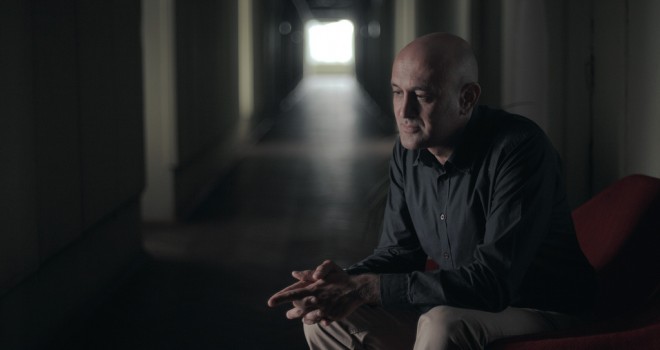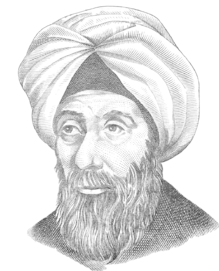
The ‘first true scientist’
By Professor Jim Al-Khalili
University of Surrey
Isaac Newton is, as most will agree, the greatest physicist of all time.
At the very least, he is the undisputed father of modern optics, or so we are told at school where our textbooks abound with his famous experiments with lenses and prisms, his study of the nature of light and its reflection, and the refraction and decomposition of light into the colours of the rainbow.
Yet, the truth is rather greyer; and I feel it important to point out that, certainly in the field of optics, Newton himself stood on the shoulders of a giant who lived 700 years earlier.
For, without doubt, another great physicist, who is worthy of ranking up alongside Newton, is a scientist born in AD 965 in what is now Iraq who went by the name of al-Hassan Ibn al-Haytham.
Most people in the West will never have even heard of him.
As a physicist myself, I am quite in awe of this man’s contribution to my field, but I was fortunate enough to have recently been given the opportunity to dig a little into his life and work through my recent filming of a three-part BBC Four series on medieval Islamic scientists.
Modern methods
Popular accounts of the history of science typically suggest that no major scientific advances took place in between the ancient Greeks and the European Renaissance.
But just because Western Europe languished in the Dark Ages, does not mean there was stagnation elsewhere. Indeed, the period between the 9th and 13th Centuries marked the Golden Age of Arabic science.
Great advances were made in mathematics, astronomy, medicine, physics, chemistry and philosophy. Among the many geniuses of that period Ibn al-Haytham stands taller than all the others.
Ibn al-Haytham is regarded as the father of the modern scientific method.
As commonly defined, this is the approach to investigating phenomena, acquiring new knowledge, or correcting and integrating previous knowledge, based on the gathering of data through observation and measurement, followed by the formulation and testing of hypotheses to explain the data.
This is how we do science today and is why I put my trust in the advances that have been made in science.
But it is often still claimed that the modern scientific method was not established until the early 17th Century by Francis Bacon and Rene Descartes.
There is no doubt in my mind, however, that Ibn al-Haytham arrived there first.
In fact, with his emphasis on experimental data and reproducibility of results, he is often referred to as the “world’s first true scientist”.
Understanding light
He was the first scientist to give a correct account of how we see objects.
He proved experimentally, for instance, that the so-called emission theory (which stated that light from our eyes shines upon the objects we see), which was believed by great thinkers such as Plato, Euclid and Ptolemy, was wrong and established the modern idea that we see because light enters our eyes.
What he also did that no other scientist had tried before was to use mathematics to describe and prove this process.
So he can be regarded as the very first theoretical physicist, too.
He is perhaps best known for his invention of the pinhole camera and should be credited with the discovery of the laws of refraction.
“It is incredible that we are only now uncovering the debt that today’s physicists owe to an Arab who lived 1,000 years ago.”
Prof Jim Al-Khalili
He also carried out the first experiments on the dispersion of light into its constituent colours and studied shadows, rainbows and eclipses; and by observing the way sunlight diffracted through the atmosphere, he was able to work out a rather good estimate for the height of the atmosphere, which he found to be around 100km.
Enforced study
In common with many modern scholars, Ibn-al Haytham badly needed the time and isolation to focus on writing his many treatises, including his great work on optics.
He was given an unwelcome opportunity, however, when he was imprisoned in Egypt between 1011 and 1021, having failed a task set him by a caliph in Cairo to help solve the problem of regulating the flooding of the Nile.
While still in Basra, Ibn al-Haytham had claimed that the Nile’s autumn flood waters could be held by a system of dykes and canals, thereby preserved as reservoirs until the summer’s droughts.
But on arrival in Cairo, he soon realised that his scheme was utterly impractical from an engineering perspective.
Yet rather than admit his mistake to the dangerous and murderous caliph, Ibn-al Haytham instead decided to feign madness as a way to escape punishment.
This promptly led to him being placed under house arrest, thereby granting him 10 years of seclusion in which to work.
Planetary motion
He was only released after the caliph’s death. He returned to Iraq where he composed a further 100 works on a range of subjects in physics and mathematics.
While travelling through the Middle East during my filming, I interviewed an expert in Alexandria who showed me recently discovered work by Ibn al-Haytham on astronomy.
It seems he had developed what is called celestial mechanics, explaining the orbits of the planets, which was to lead to the eventual work of Europeans like Copernicus, Galileo, Kepler and Newton.
It is incredible that we are only now uncovering the debt that today’s physicists owe to an Arab who lived 1,000 years ago.
Professor Jim Al-Khalili presented Science and Islam on BBC Four on Monday 5, 12 & 19 January


